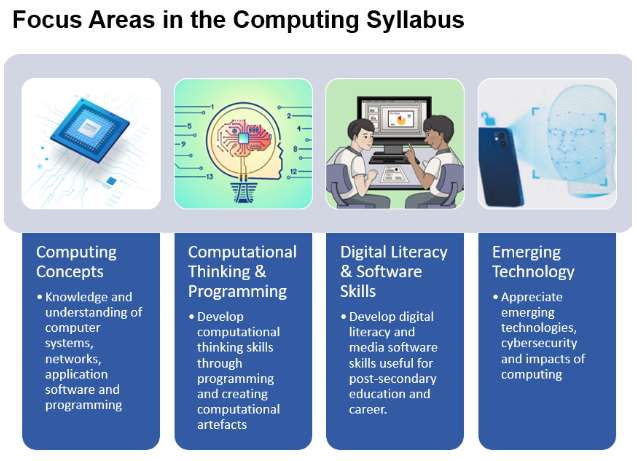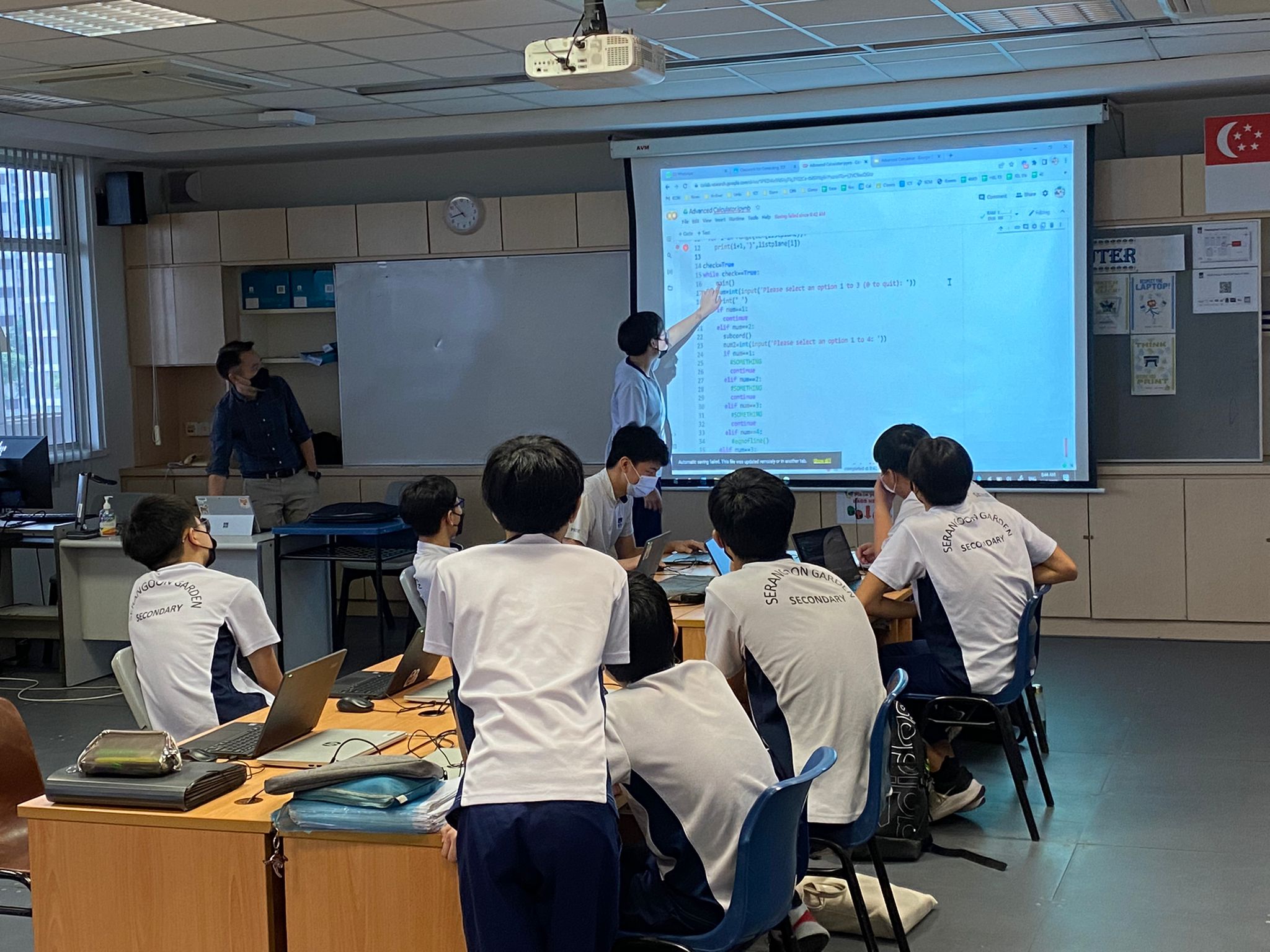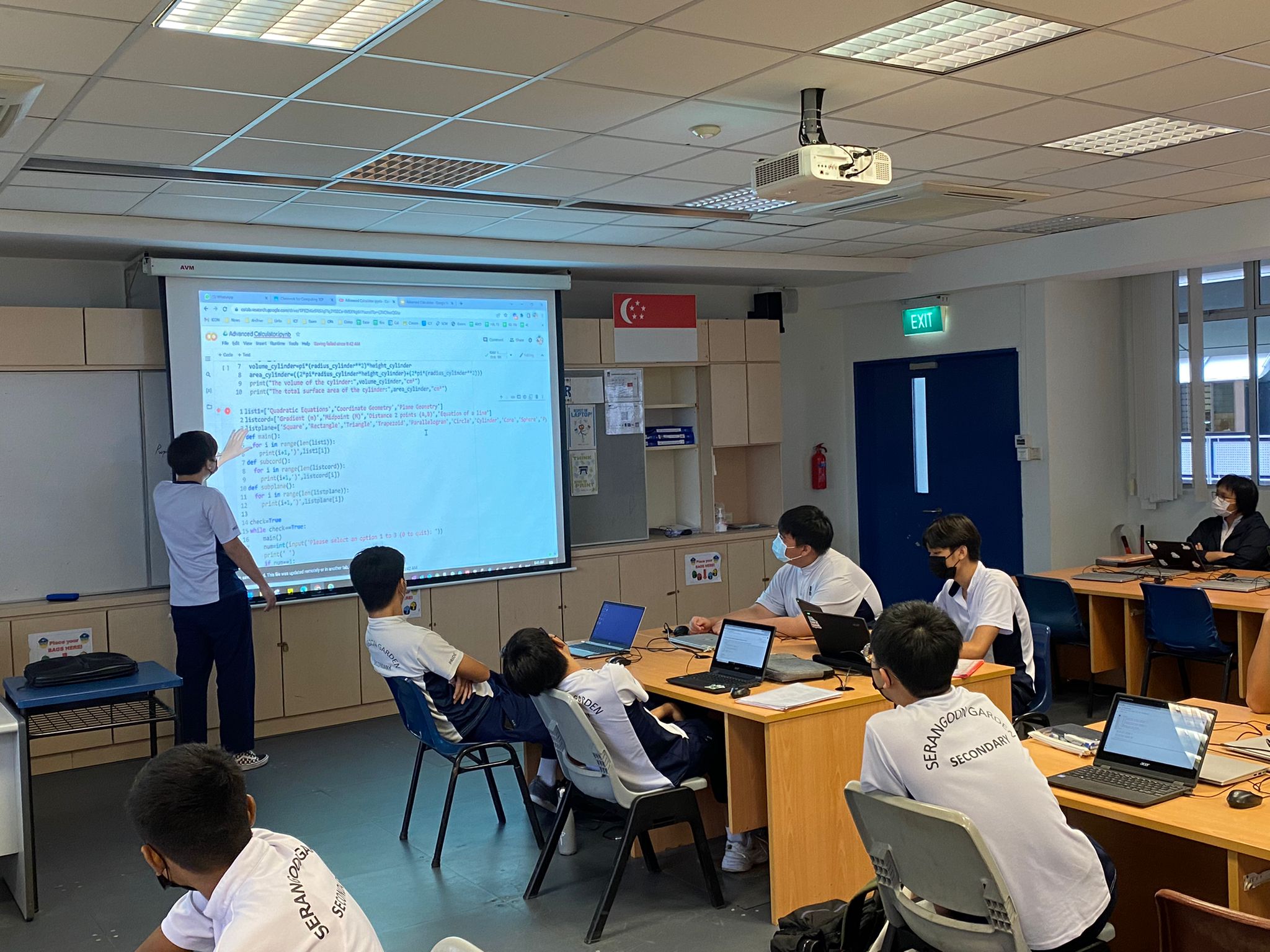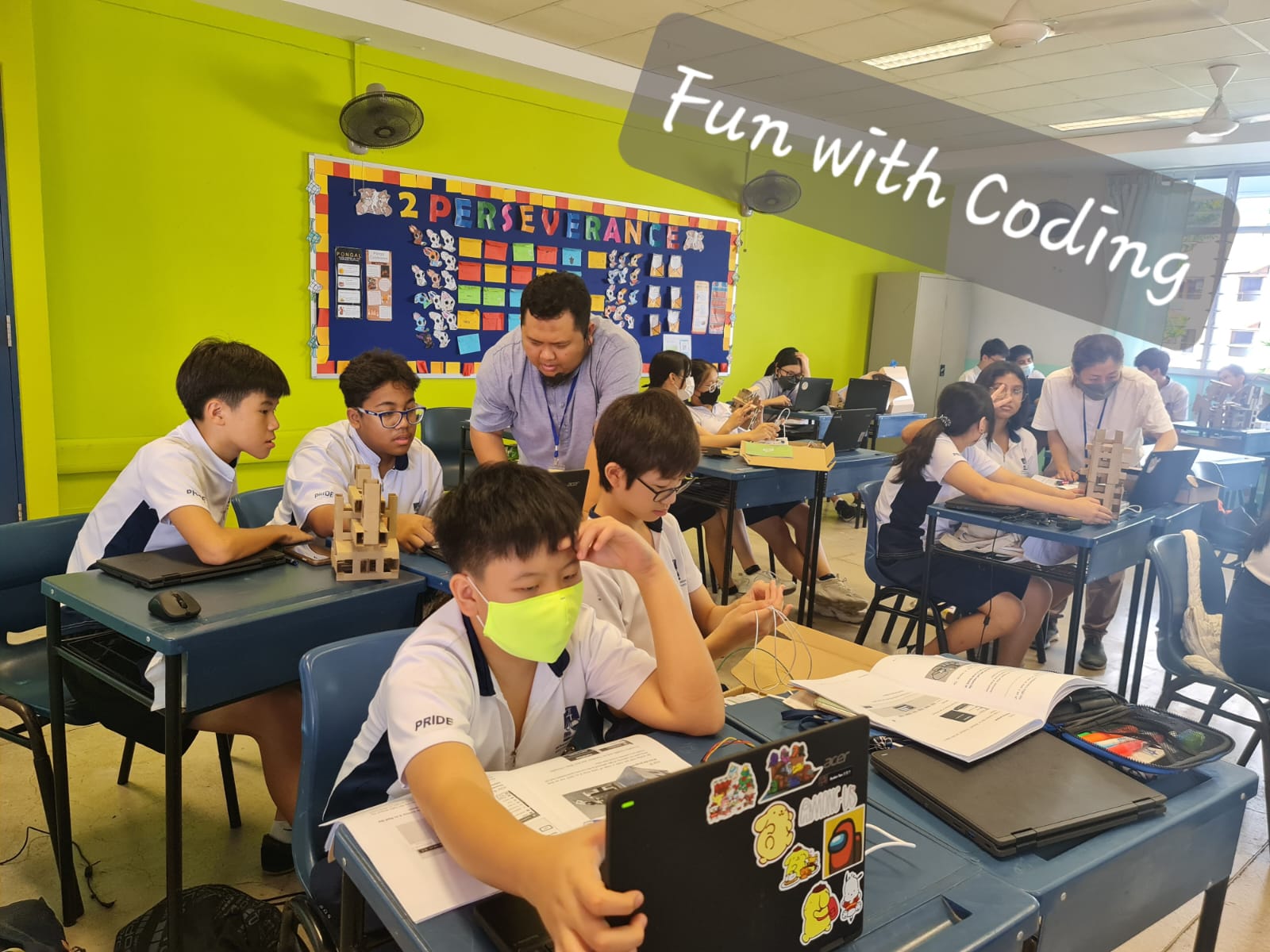Computing
Creative Solutions for Complex Problems
Computer science is a dynamic and rapidly growing area that has become an integral part of the world that we live in today. Computer scientists theorise, design, develop and apply the software and hardware for technology most of us use every single day. As the digital world is rapidly evolving, the need for computing experts continues to grow. Everything from artificial intelligence, finance and banking, gaming and mobile applications, to healthcare and security all require the specialist skills of professional computer scientists.
Aims of the Computing Curriculum
Computing will be offered at G1, G2 and G3 levels for Upper Secondary students starting 2026. The syllabus aims to provide students with the foundation to continue with further studies in computing and skills to participate in a rapidly changing technological environment so that the concepts and skills learnt would also be applicable in other fields that require computing.
The three levels of Computing progress from building foundational skills to focusing on problem-solving and finally to catering to students with a particular talent or passion for the subject. G1 Computing develops essential software and document processing skills. G2 Computing then places a stronger emphasis on problem-solving through more advanced spreadsheet functions and introduces block-based programming. Finally, G3 Computing caters to students with a demonstrated aptitude by introducing more advanced, specialized topics such text-based programming
Building A Strong Foundation
Students will be able to use relevant application software to solve problems in everyday context, and represent their problem solutions via data tables, flowcharts and programming statements. They will be able to use typical office productivity application software for word processing, multimedia presentations and spreadsheet calculations and charts. Students will also be able to demonstrate their skills in interface design, computer drawing and image editing through blogs and web pages, as well as animated stories and games.
Lower Secondary students will get a taster of the Computing curriculum during the 20 hour Code For Fun programme in Secondary One and AI For Fun programme in Secondary Two.

Developing Self-directed learners in a Blended Learning Environment
Teachers harness technology to enhance teaching and learning so as to better support self-directed and collaborative learning as well as developing the digital literacies in our students. Students learn and develop a variety of dispositions and skills which provide them with a strong foundation from which they can go on to higher levels of learning. Through a problem-based approach, they will develop themselves as self-directed learners and learn the importance of collaboration, at the same time developing critical thinking and problem-solving skills. A large number of lessons are recorded and immediately made available online for students to access anywhere, anytime.



Links to Syllabus Documents
2026 G1 Computing Teaching and Learning Syllabus
2026 G2 Computing Teaching and Learning Syllabus
2024 G3 Computing Teaching and Learning Syllabus

